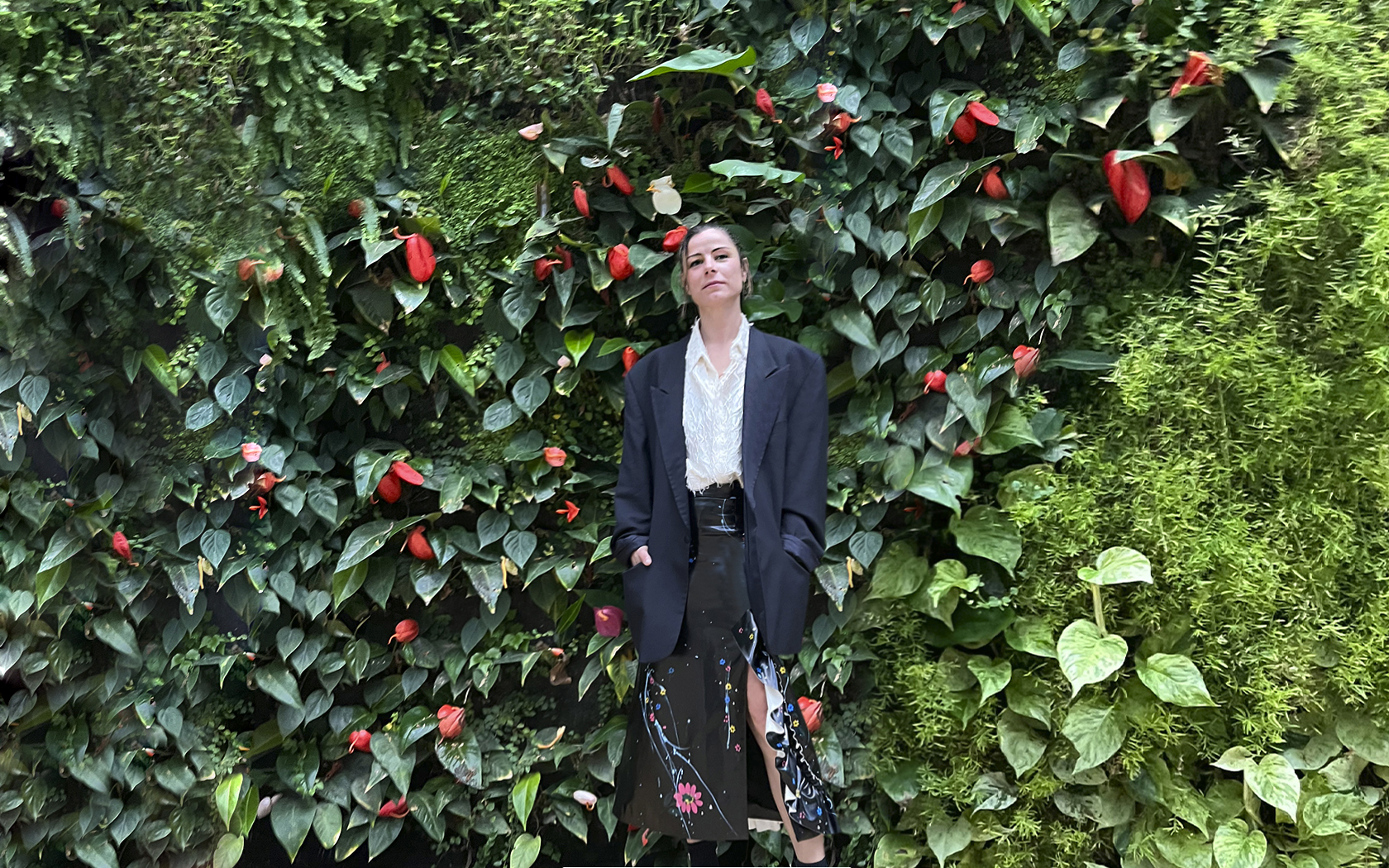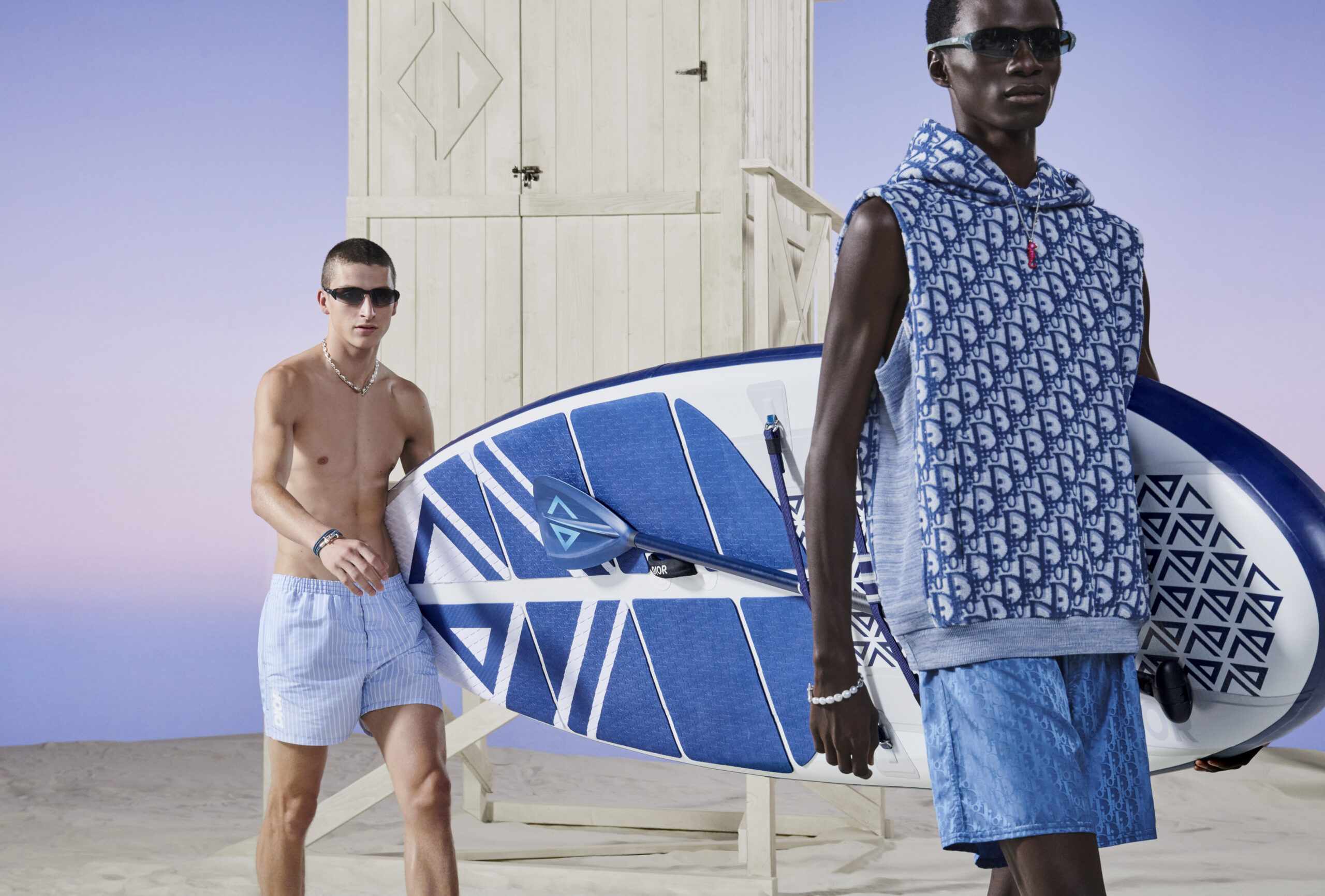We interviewed Natalia Culebras, Head of Sustainable Design & Head Designer of Denim & Shirts at Dior Men, who has been working at DIOR for 16 years.
During her time at this fashion brand, Culebras has collaborated with two of the most renowned creative directors: Kris Van Assche and Kim Jones. With Kim, she has been able to take forward this exciting project with a sustainable approach.
At the heart of sustainable luxury fashion, we dive into a revealing conversation in which we explore the real transformation that DIOR is leading in the fashion landscape.
Transforming fashion: from greenwashing to true sustainability
In today’s fashion landscape, the term “sustainable” has gone from an aspiration to a necessity. However, the transition to sustainable fashion is hampered by decades of unsustainable practices that have left a significant footprint on the environment and our daily lives. The urgency is clear: all collections should be sustainable. However, the reality is that the industry is still struggling to find its way in this new paradigm.
Many brands face the dilemma of how to embrace sustainability in a genuine way, without falling into the traps of greenwashing. The fear of being perceived as opportunistic rather than authentic has led to widespread wariness. This is a consequence of some brands capitalising on the trend by using greenwashing strategies to attract consumers looking for sustainable products.

Natalia Culebras, designer and sustainability manager at Dior Man.
As Natalia Culebras tells us in this exclusive interview for Magazine Horse :
True sustainable fashion goes beyond mere labelling. It is a deep commitment that is reflected in every fabric, in every step of the production chain and in the brand’s mission itself. Communicating sustainability goes beyond following a trend; it involves educating, collaborating and, above all, being transparent about every choice and process.
In the complicated scenario of 2024, information on the origin of products, ethics in production and respect for animals are aspects that consumers seek to understand. It is imperative that brands take responsibility for clear and complete information about their practices and choices. The real transformation is not just about making fashion sustainable, but about going beyond that. Brands must be agents of change, educating their consumers, collaborating on initiatives that promote sustainability and being transparent about the challenges they face in their journey towards more conscious fashion.
Communicating the production process with the audience in a clear and transparent way
DIOR transparently addresses the challenges inherent to sustainability in the fashion industry. Identifying the exact origin of the materials used can be difficult. Still, the company partners with manufacturers committed to ethical practices and certifications that ensure responsibility in the supply chain. This is the case of Eblo, a Spanish brand that has a cotton field on a farm in Andalusia.
As Culebras explains, it is very important to get involved in the whole process to be involved in the origin of the fabrics and to be able to help. “We have to make a change and a commitment to be able to support each other and have a product that can create something beyond”.
The brand faces the difficulty of communicating its commitment to sustainability, as achieving 100% sustainability in such a diverse industry is a considerable challenge. The complexity increases when incorporating luxury products such as leather goods, where the demand for traceability is more demanding. Despite this, DIOR excels in applying globally recognised standards and developing internal codes to obtain certifications that support the sustainability of its textile products.
For luxury brands, especially in countries such as France, where legislation requires detailed product traceability, the challenge is magnified, leading brands to question every thread in their supply chain.
In particular, the company consciously addresses the sensitive issue of animal products, ensuring that the fabrics used meet the highest standards of animal welfare and sustainability. As Culebras explains, “the firm recognises the need to invest more in sustainable processes and certifications to maintain the integrity of its brand in the competitive luxury market”.
Culebras herself is aware of the limited availability of products that meet the strictest standards, which is why she says the company strives to balance excellence in design and quality with responsible practices, demonstrating an ongoing commitment to the evolution towards sustainability in the luxury fashion industry.

Beach capsule collection by Dior Men in collaboration with Parley for the Oceans. Photo: Brett Lloyd
One of the biggest challenges they face at DIOR is denim, which, as Natalia explains, “is the most polluting product and our main item. Luckily, technology helps to create a new product while keeping the same shape. “Apart from working with lasers, we work on fabrics that can be adaptable to this type of technology”.
As for Artificial Intelligence, at DIOR they change and systematise technology processes simply to create the product. “We work only with 3D printing, but we focus it more on the marketing level in the shop, where you can adapt the clothes.
Five years ago I proposed my sustainability project to the creative director of DIOR, Kim Jones. The first step we took was to change the entire permanent collection in 3 months, working in Valencia with Jeanology and Spanish fabrics from Ebrox or Cavex.
Parley for the Oceans: looking towards a sustainable future
The brand has entered into a strategic partnership with Parley for the Oceans to launch its sustainable Beach Capsule collection. Rather than exploring new fabrics, they have decided to apply learnings accumulated since the first collection, consolidating their research and development efforts.
For DIOR, reaching 96% sustainability in just one year is a significant achievement. The challenge lies in the speed needed to implement these advances in regular collections and adapt them to seasonal ones, considering the time constraints inherent to the fashion industry.

Beach capsule collection by Dior Men in collaboration with Parley for the Oceans. Photo: Brett Lloyd
“With the collaboration we did with Parley, it was super difficult for DIOR to go into fabrics only made of plastic and we didn’t know to what extent the customer would accept it. You have to invest a lot to achieve a good quality, even without knowing the final result”. He explains that in the first collection, 48-50% was plastic from the sea and 4% recycled. The rest was not sustainable. On the other hand, in the latest collection they have presented with Parley, they have reached 96% sustainability. “These are values that are key for us,” he says.
Culebras says they want to add the essence of DIOR to this beach collection and make it their own, just as they are inspired by the DIOR archives or the quality of the product they make in a regular collection. They also work with brands that make accessories or have a special product, such as a surfboard or paddle surf board.

Beach capsule collection by Dior Men in collaboration with Parley for the Oceans. Photo: Brett Lloyd
They also work with fabric production brands, such as Pyratex. “We want to focus on the passion Kim has and the way she is, as well as Christian DIOR in creating a relationship where everything you do has a meaning and a story behind it.
The dilemma of luxury and ethics
In the delicate terrain of sustainable luxury fashion, brands are forced to balance the desire for innovation with ethical responsibility. Traceability stands as a critical tool, enabling conscious consumers to make informed choices and demanding that brands embark on a path of genuine sustainability, even when the route is challenging. In the world of sustainable luxury, every thread counts, and every choice defines the future of an ever-evolving industry.

Beach capsule collection by Dior Men in collaboration with Parley for the Oceans. Photo: Brett Lloyd
She says they went from using 4,000 to 7,000 litres of water to make a cowboy to using as few chemicals as possible. The ultimate goal was to make a product that had as little impact as possible. “In denim, what we have achieved is to become 99% sustainable”.
Another interesting fact is that 5 years ago in DIOR’s permanent collection of basics they started to replace the fabrics. In doing so, they changed the product completely.
In two years we managed to make 30% sustainable, and today we can say that we are at 85% sustainability in the permanent collection.
Another important aspect that includes the luxury sphere is pricing. “Keeping them in a market that is under pressure is difficult, but at the end of the day the brands are responsible for putting the product on the market and the customer is responsible for what they buy”. Culebras also explains that if you work in the luxury sector, the lucky thing is that the collections are not mass productions, so there is more control over what you do and more margin. “The problem is how you have to invest because everything costs more and the product is more expensive”.
She gives the example of Parley: if you buy a product from the Parley collection it costs the consumer 30% more than a product from the normal collection, but he says that the customer is committed to the cause. He also says that the customer realises that by buying DIOR he or she is part of the message and its values.
Our sustainable collections are very small, but the message is very strong. When a company is really involved in sustainability, not by doing a collaboration but by working with an NGO, they want to convey a message with intention, and that is what helps everyone learn and know how to choose what you want to buy.
In 2021, Christian Dior Couture was awarded the Butterfly Mark certification by Positive Luxury after passing a rigorous audit, attesting to the authenticity of its sustainable strategy.
The Butterfly Mark Certification is the leading sustainability certification assessed and awarded to companies worldwide.




